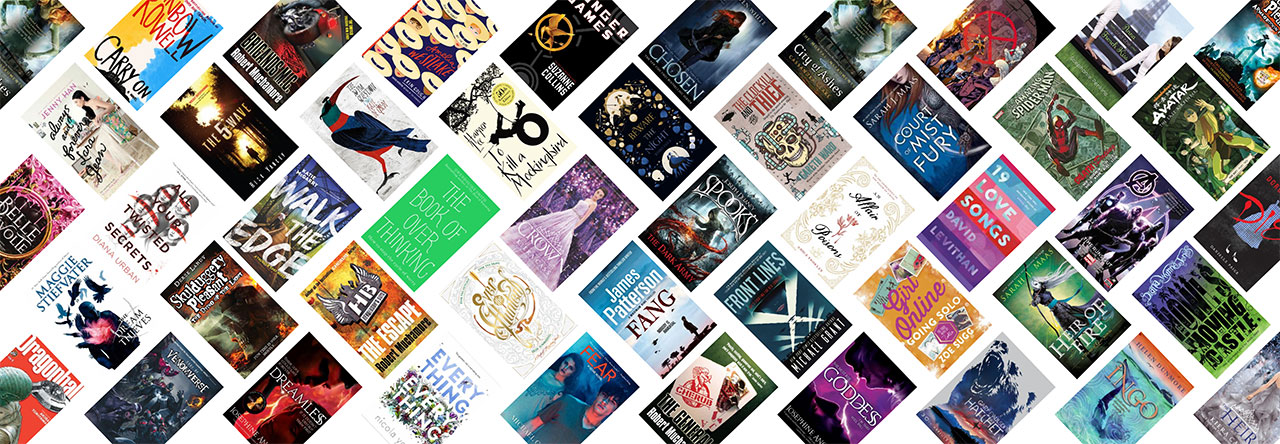I’m pretty proud of our non-fiction section. It’s small but concise. It has lots of books that will teach you about all the important things you need to know: from passing algebra to how to cook roast chicken, from surviving high school to how to get dressed in the morning. In this series, I’ll look at one or two books from each dewey section, highlighting my favourites. Some sections will have more books than others, due to size or the variety of topic contained within. If you have any books you’d like to spotlight, please leave them in the comments!
000s – Generalities
Dead Strange
This book is a miscellany of the bizarre unexplained phenomena that puzzle ‘experts’ everywhere; an A-Z of oddness. It’s fairly tongue-in-cheek, and if you’re not convinced you’ll at least be entertained. I’m a bit of a conspiracy theoriest nut (although I find them enjoyable rather than believable) so I had a lot of fun reading this. It’s a fairly exhaustive selection, and it even introduced me to a few I hadn’t heard of before…
100s – Philosophy and Psychology
i.d : stuff that happens to define us
This is a collection of real stories, each illustrated, with an Q and A with the story teller about what happened next. It’s so much more than the sum of its parts, however. Each illustration conveys the emotion of the story being told, whether positive or negative. Each discusses a certain incident; the moment when a teenager learns to stop being negative about her body, or the time an immigrant girl really feels at odds with her mostly white companions. The illustrations themselves are done in a scratchy, naive style, which help to convey the fraught emotions of each of the stories.
200s – Religion
Understanding Islam
Islam is in the news a lot these days, but without talking about the context of this religion. It’s a bit simplistic to say that this book will teach you “everything” you need to understand about Islam -an extremely diverse faith- but it’s an extremely good place to start. It looks at the different sects within Islam, some of its cultural traditions (again, it’s an extreme diverse faith!) and its core tenets. It also discusses the history and the contributions Islamic people have made to the world, which are often left out of discussions. It really helped me gain a pretty good, if basic, understanding of Islam and its definitely worth picking up if you follow international events.
300s – Social Sciences
Where children sleep
This is a fascinating collection detailing, like it says in the title, the places where children from around the world sleep. A two page-spread consists of the photo of each child, a small description of where they live, their home life and their ambitions, with a full page colour photo of their ‘room’. It’s a simple concept that never comes across as patronising or proselythising; it manages to communicate the massive inequality in different parts of the world, as well as social issues that affect the featured childrens’ lives.
400s – Langauge
Punctuation 
This book is never going to set the world on fire but your English teacher will thank you for reading it, especially if you’re having trouble writing essays. While studying where and when to use things like commas might seem a bit redundant, this book will help you use them skillfully, which might mean the difference between a merit and an excellence.
500s-Sciences
The Reed Field Guide to New Zealand Native trees
A great read for the budding botanists (ha ha) out there. It’s a classic, and for good reason; it’s got plenty of pictures showing the distinguishing features of each type of tree. I like to think of these kind of books as ones that will be useful during a zombie apocalypse: telling the difference between rangiora and ongaonga could certainly save you a lot of pain and trouble! Each section on the tree contains pictures of its leaves, fruit or flowers, and stems or trunks. While there’s not a whole lot of written information in this book, it also lists other books that could be helpful.
600s – Technology
After Toast 
A trend among cookbooks aimed at a YA audience is that they try a bit hard to be ‘trendy’: losts of ‘slang’, lots of references to texting, and criminal overuse of the word “mates.” Luckily, this book skips all those traps, focusing instead on simple, easy recipes that might even be healthy. They’re split into sections by meal, with and index at the back. There’s a handy guide at the beginning, explaining what tools you’ll need, how to tell if certain meats are cooked, and various other ‘how to’ sections that are pretty useful.
Style Me Vintage: make up 
The verdict every year seems to be that the ‘vintage’ look is ‘in.’ But what do the fashion scribes mean by vintage? Marilyn Monroe-esque fifties glamour or the frivilous flapper look of the twenties? The dewey freshness of the seventies or the enigmatic sleekness of the thirties? Once you’ve worked that out, come and grab this book. It’s got looks for every decade from the twenties to the eighties; by matching the right make up to your outfit, you can be assured of steering clear of fashion anachronism. Of course, there’s nothing stopping you from mixing the looks up: a fifties mouth with a twenties eye, for serious glam. It’s also got some great tips and techniques for beginners, like how to put on false eyelashes. Which are apparently essential for a few looks…
700s – Arts and Recreation
Back and Beyond: New Zealand painting for the young and curious
The 700s, with their focus on the arts, often provide the most visually appealing books to be found anywhere in the library. This is a prime example, featuring gorgeous reproductions of amazing paintings from New Zealand artists both traditional and contemporary. Each painting is accompanied by a brief text describling the themes of the piece and the artist’s other work. It’s never dry or boring; it manages to convey both the common themes and the diversity in paintings from New Zealand.
Legends, Icons and Rebels: Music that changed the world
This is a fantastic new book that profiles 27 artists who changed the face of music forever. Again, it’s a lovely looking book, with a beautiful full page depiction of each musician. It contains a brief biograpy of each person, and explains their influence on music. For example, I didn’t know that Little Richard mentored The Beatles AND Jimi Hendrix AND toured with the Rolling Stones. Pretty awesome, if you ask me! It also has a two CDs, each with a famous song from each artist or group.
800s – Literature
Critical Companion to William Shakespeare
Shakespeare plays form a pretty much intrinsic part of the English ciruculum. But even the most conscientious English teacher might have trouble helping you to navigate the themes, characters and language of whatever play you’re studying. That’s where this book comes in handy: it has information on all of Shakespeare’s plays, each of them broken down into easy to read sections. There’s a scene by scene synopsis of the play, a commentary on the themes, and then an entry on each character and what motifs they embody. It’s fairly dense (as you might imagine) but never becomes unintelligable.
900s- History and Geography
Diary of a Soviet Schoolgirl
The brutal conditions of Soviet Russia are often neglected in the study of history. This diary, written by a teenage girl from 1932-1937, demonstrates just how hard the lives of ordinary people were during this time. Nina Lugovskaya’s father was arrested for being a “counter-revolutionary” and Nina herself was eventually arrested and sent to a gulag. What makes this diary especially fascinating is that the passages that were used as evidence against her are underlined, and this has been kept in this reproduction of the diary. It shows just how seemingly minor complaints could be interpreted as showing author was “preparing to kill Stalin.” It also shows the persistance of other facets of ‘ordinary’ teenage life: Nina talks about about boys, her friends and her disdain for school and her teachers. Unlike the Diary of Anne Frank, this story has a happier coda: Nina survived her time in the gulag, and was eventually pardoned.
Biographies
Lady Gaga: Critical Mass Fashion
If you’re in the mood for something a bit lighter (and you’re a Gaga fan) then this is perfect for you. Even if you’re not, you can’t fault the book on the aesthetic front: there are some stunning photographs of Lady Gaga’s extreme outfits, which are definitely worth a look. It’s not a hard-hitting expose of Gaga’s metoric rise, rather a faintly fluffy piece of biography, but it’s a fun palate cleanser about one of the most notorious pop stars of the last 10 years.




Comments are closed.